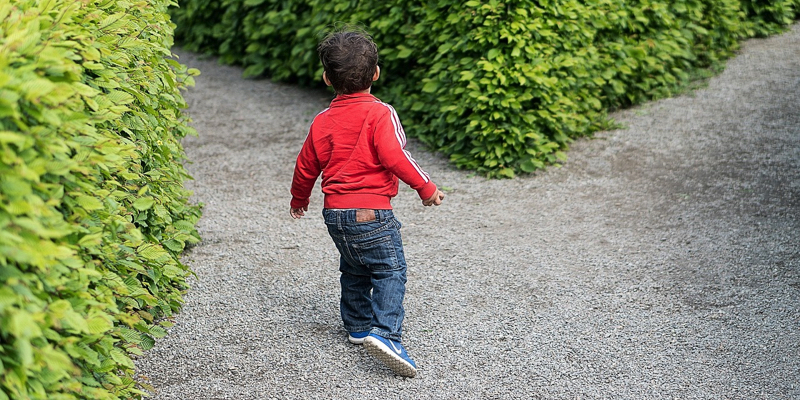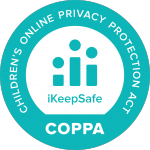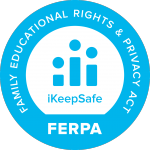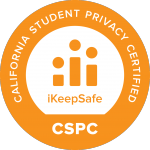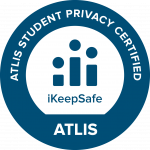*****Updated for 2025: Since this post was first written, there’s been even more focus on developing cognitive flexibility in students. We’ve updated it with new strategies and tools that can help foster adaptability and critical thinking in the classroom.
Cognitive flexibility is a crucial skill for students to develop as it enables them to adapt to new information, shift their thinking, and solve problems creatively. In this blog, we’ll explore effective strategies to enhance cognitive flexibility in the classroom and help students thrive in a rapidly changing world.
Encourage Perspective-Taking
Helping students see the world through different lenses is essential for developing cognitive flexibility. Implement activities that require students to step outside their own viewpoints and consider alternative perspectives. Organize structured debates where students must defend positions they might not personally hold. Create role-playing scenarios that challenge them to embody different characters with unique motivations. Use diverse literature and storytelling to expose students to varied cultural perspectives and life experiences. When students practice viewing situations from multiple angles, they strengthen neural pathways that support flexible thinking and develop greater empathy for others.
Incorporate Open-Ended Problems & Puzzles
Unlike standardized tests with single correct answers, real life rarely offers straightforward solutions. Present students with complex, open-ended challenges that mirror authentic problems. Introduce design thinking projects where students identify real community issues and develop multiple potential solutions. Incorporate logic puzzles that can be solved through various approaches. STEM-based activities, such as engineering challenges with limited materials, force students to reconsider assumptions and try alternative methods when initial attempts fail. These experiences teach students that problems can have multiple valid solutions, training them to adapt their thinking processes based on changing conditions.
Promote a Growth Mindset
The language we use around learning significantly impacts how students respond to challenges. Create a classroom culture where mistakes are normalized and viewed as valuable parts of the learning process. Explicitly teach students about neuroplasticity and how the brain physically changes when we learn new things. Model resilience by sharing your own mistakes and how you learned from them. Implement reflection routines that ask students to identify what worked, what didn’t, and what they’ll try differently next time. When students understand that intelligence isn’t fixed but can be developed through effort and strategy, they become more willing to take risks and approach problems with greater flexibility.
Use Cross-Disciplinary Learning
Traditional education often compartmentalizes knowledge, but real-world problems rarely respect subject boundaries. Design integrated lessons that naturally blend multiple disciplines, such as creating geometric art that applies mathematical principles, writing historical fiction that requires both historical research and creative writing skills, or developing science experiments that incorporate data analysis and communication skills. Project-based learning that spans subject areas helps students recognize patterns across disciplines and transfer knowledge from one context to another. This interdisciplinary approach builds neural connections that support more flexible thinking strategies and encourages students to draw from diverse knowledge bases when solving problems.
Foster Flexible Thinking Through Coding & Robotics
Educational robotics platforms like Ozobots provide ideal environments for developing cognitive flexibility. When students program robots, they engage in a continuous cycle of hypothesis testing: writing code, observing results, identifying errors, and adjusting their approach. This iterative process naturally builds perseverance and adaptability. Debugging code requires students to think logically while considering multiple potential causes for unexpected behaviors. Group robotics challenges further enhance flexibility as students must negotiate different approaches and integrate diverse ideas. The concrete, visual nature of robotics makes abstract computational thinking concepts tangible and provides immediate feedback that helps students develop more flexible problem-solving strategies they can apply across contexts.
Teach Strategy Switching
Explicitly teach students to recognize when a particular approach isn’t working and how to pivot to alternative strategies. Present problems that intentionally lead to dead ends, requiring students to backtrack and try new methods. Introduce students to various thinking frameworks (like De Bono’s Six Thinking Hats) that provide structured ways to shift perspectives. Create classroom routines where students share not only their solutions but also the different strategies they considered along the way. By making strategy switching a conscious and valued part of problem-solving, students develop metacognitive awareness that supports flexible thinking in all areas of learning.
Embrace Productive Ambiguity
While clarity is important in education, students also need practice working through uncertainty. Design learning experiences with intentionally ambiguous elements where students must define parameters themselves or work with incomplete information. Implement inquiry-based science investigations where students develop their own research questions. Assign creative projects with broad guidelines rather than highly specific rubrics. Teaching students to navigate ambiguity prepares them for real-world scenarios where problems aren’t clearly defined and solutions must evolve as new information emerges. The ability to remain effective amid uncertainty is a hallmark of cognitive flexibility.
Cultivate Diverse Thinking Environments
The physical and social environment significantly impacts cognitive processes. Create learning spaces that offer variety—quiet zones for reflection, collaborative areas for group problem-solving, and active spaces for movement-based learning. Vary your instructional approaches regularly, alternating between visual presentations, hands-on activities, discussions, and independent exploration. Form diverse student groups that bring together different thinking styles and strengths. This environmental variety prevents students from becoming too comfortable with single ways of learning and processing information, naturally encouraging more adaptable thinking patterns.
———————————————————————————————————————————————————————
Do you have students in your classroom you can’t pull away from a task? While other students move easily between subjects, some stay rigidly focused on one idea, assignment, or problem. This reflects their level of cognitive flexibility. Everyone has different abilities, but teachers can create a classroom in which all students can improve their cognitive flexibility.
What is Cognitive Flexibility?
Simply put, cognitive flexibility reflects how we approach new challenges, tasks, and problems each day — and the healthy mindset with which we overcome obstacles. “Flexible thinking allows us to come up with ways to tackle problems,” says education writer Peg Rosen. “Being able to see things in different ways helps us develop different strategies.”
She uses the example of a deck of playing cards to explain cognitive flexibility. A child can sort the cards in a few ways: by color, number, or suit. The ability to see the different ways of doing things and understanding when certain options are best displays cognitive flexibility.
We use cognitive flexibility daily, even if mostly on a micro level. The team at CogniFit provide some examples of how cognitive shifting can help in various life situations. These include:
- The ability to adapt quickly to new situations.
- The patience to tolerate changes and accept them as the new normal.
- The ability to see things from multiple points of view and understand where people are coming from.
- The mental strength to move from one activity to another instead of focusing intently on one task or challenge.
A new situation might be something small — like a milk carton spilling at lunch — but it requires students to think about how they should handle the situation and move on. Will they clean up the milk and ask for a cup of water, or will they be upset over the lost milk for the rest of the day?
“Students who exhibit strength in cognitive flexibility and can handle transitions easily, can shift between subjects and tasks in stride, and may have success in tasks that require them to apply learning in one arena to problem solving in another context,” the team at C8 Sciences writes.
Cognitive flexibility is part of our nature, but it can also be learned. More importantly, it can also be taught to students who are very rigid in their thinking and in their views of the world.
What Holds People Back from Flexible Thinking?
While most people think they practice cognitive flexibility, many actually experience several blocks or problems which they don’t recognize. Physician and psychiatrist Daniel G. Amen, author of “Change Your Brain, Change Your Grades,” says that the area of the brain known as the anterior cingulate gyrus is often overactive in people who have low cognitive flexibility. Simply put, the ACG is the part of the brain used for shifting attention.
“When the ACG works well, it allows us to focus on something, let go, and then shift to focus on something else,” Amen writes. “However, when it is overactive, there is a tendency for people to get stuck.”
In practice, “getting stuck” means becoming more argumentative, worrying, automatically saying “no” to things, and getting upset when something doesn’t go their way. The person might not realize they are stuck, but their brain is sending all kinds of warning bells about a topic or situation.
Saga Briggs, who researches and writes about cognitive models of writing pedagogy, explained several factors that can challenge our cognitive flexibility and limit the ways we think about problems. These include:
- Confirmation bias. We shape the information given to us to match our world view, or seek out information that we agree with.
- Information bottleneck. There is so much to process that we can’t clearly look at the information in front of us, so we are indecisive or make a poor decision.
- Reinforcement. We follow the same steps and make the same decisions as in the past because they are familiar and comfortable.
As you can see, many of our cognitive flexibility blocks are subconscious or unintentional. Few people actively seek out to live a life full of confirmation bias. However, knowing these challenges to your cognitive flexibility exist can help you overcome them.
As a teacher, you likely see students struggle with cognitive flexibility, no matter what grade you teach. Educator Jennifer Warren saw this with her senior English class. She assigned students to one of two sides and asked them to create a marketing campaign in favor of their side. After twenty minutes, the students were asked to switch and defend the other idea — the one they first disagreed with.
Even her advanced students thought it was considerably harder and more frustrating to have to think in a different way to defend a side that they had previously spent 20 minutes building arguments against.
Having these “mind blocks” doesn’t make you less intelligent; it just means that you haven’t learned how to approach problems differently. We all have our own unique mental blocks that hold us back sometimes.
Explaining Cognitive Flexibility to Students and Parents
As you start to explore concepts of cognitive flexibility and bring them into the classroom, it may be difficult to discuss this life skill with your students or their parents.
Start by explaining that humans aren’t the only ones that exhibit cognitive flexibility. Science writer Peter Hess says chimpanzees, who eat tortoises, use different strategies to crack open shells. One is to bang them against a tree, which is similar to the way they open coconuts. In other words, a similar solution is applied to a new situation. They also share the food with others or store it for later, showing proof of significant social circles and future planning.
Teachers can share this example as a way to show cognitive flexibility outside of the classroom — and even the human world.
The next step is to be clear that challenges with cognitive flexibility are natural in many students, and issues at a young age will likely change over time.
“Understand that such occasional fuss is developmentally normal, may be willful, and flexibility develops with age and things change,” writes psychiatrist Mani Pavuluri, director of the Brain and Wellness Institute. She uses examples from her own childhood: a cousin spreading butter the wrong way, her dad holding a pencil differently than she was taught, etc.
Developmental cognitive flexibility can be delayed, but it can also be taught and developed at home and in the classroom.
The final step is to show how you are taking steps to help students with low cognitive flexibility, while encouraging them to grow their skills at the same time.
For example, the Canadian site LD@school, part of the Learning Disabilities Association of Ontario, has a module to help teachers understand how to work with students with low cognitive flexibility. They recommend maintaining a structured classroom schedule and minimizing change so as not to overwhelm students. They also encourage teachers to warn students about changes and provide ample time to move from one task to another.
In any given class, you will have students who get excited about new challenges and topics alongside those who struggle to cope with these changes.
Engaging Cognitive Flexibility Classroom Activities
You may be surprised which of your students fixate on problems and are less willing to accept change. As an educator, you need to give students opportunities to practice their cognitive flexibility in a safe and structured environment.
“Students need explicit instruction and opportunities to practice the flexible thinking that will make the most of their brains’ fertile adolescent development stage,” writes neurologist and educator Judy Willis. She explains that the young brain is more open to exploration, passion, and interest than older brains. Teachers who foster cognitive flexibility early on can prepare students to think creatively and overcome mental roadblocks in the future.
Fortunately, cognitive flexibility can actually be a fun future-ready skill to develop in the classroom.
Show Creative Examples of Cognitive Rigidity
While the concept of cognitive flexibility can be difficult for students to grasp, teachers can use fun ways to explain the concepts of “getting stuck” or focusing on the wrong information.
For example, the Research Institute for Learning and Development shared some humorous examples of students misreading directions because they only focused on one word or one particular meaning of the word. When asked to draw a plant cell, for instance, a student drew a flower sitting in jail — focusing on the criminal definition of the word “cell” instead of the biological one.
While shared in fun, these images can start a valuable discussion about how someone might take an assignment literally, in the manner of Amelia Bedelia, or have trouble thinking about ideas in different ways.
Challenge Students to Play Games Differently
Blogger Nicole Day, founder of the blog Raising An Extraordinary Person, encourages parents (and teachers) to create new rules for games. It demonstrates using the same materials to do something different. For example, in the game of Chutes and Ladders, you can reverse the rules where you slide down the ladders and go up the chutes.
In the classroom, teachers can ask students to create board games and then share them with their peers to play the games in a different way. This is another fun and engaging way to challenge cognitive flexibility.
Play Word Games and Tell Jokes With Students
There is actually a psychological strategy to introducing fun games and humorous examples of cognitive flexibility as an engaging way to broach a complex subject.
Michelle Liew at Learning Mind says being humorous and having a quick wit is a great way to develop cognitive flexibility. Students can learn about wordplay and how one word can have multiple meanings. They can be taught to see a situation, such as misusing a word, as something other than an error.
These activities will also release serotonin, dopamine, and endorphins in the brain, making students feel happy and dispelling fears and anxiety around change.
Introduce Fun Surprises During the Day
Using positive surprises in the classroom can support and encourage cognitive flexibility too, writes Meghan Fitzgerald at early childhood education platform, Tinkergarten.
An unexpected afternoon of playing learning games or outdoor period for students can teach them that changes and surprises can be good. Not all change is something to be afraid of. As students learn this, they will better be able to cope with neutral changes or even negative changes in their lives.
Teacher Sarah Rudell Beach at Left Brain Buddha has developed games for cognitive flexibility at every learning level. Younger learners can practice sorting (similar to the playing card example used earlier), while teens can start journaling and volunteering to collect their thoughts and face new situations. Beach even recommends Minecraft as a tool because kids have to think creatively, use materials provided to them, and place themselves in a fantasy world. There’s something for every learner.
Images by: qimono, Graham Oliver/©123RF.com, Goran Bogicevic/©123RF.com, Positive_Images


